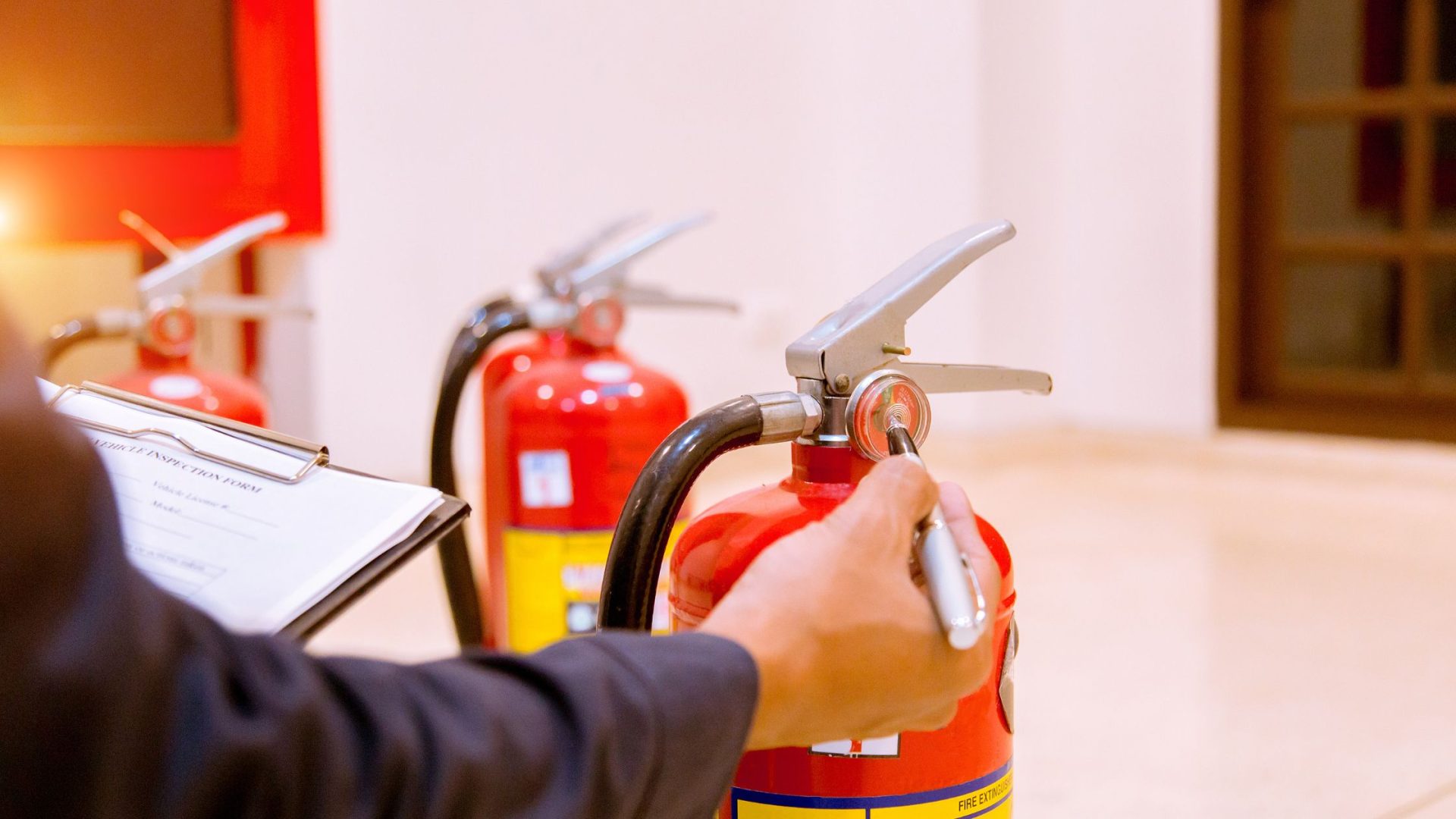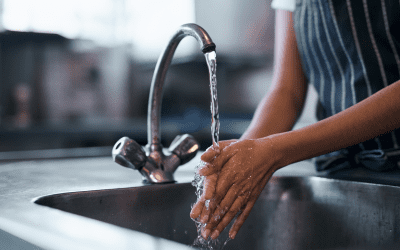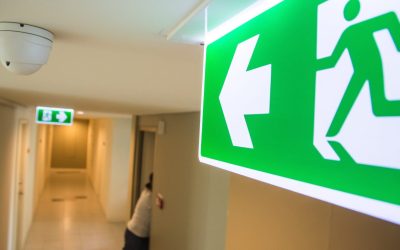
Top Fire Safety Tips According to FireCloud365
As one of Europe’s leading fire safety management apps, we consider ourselves to know a thing or two on the topic. As part of this month’s blog, we thought we’d impart some of that wisdom in a handy checklist.
According to Firemark, you are seven times more likely to experience a fire if you live in shared or rented accommodation. A fire in your building can wreak unfathomable damage – damage that can be multiplied significantly if you are a leaseholder or responsible for a multiple-occupancy building such as a hotel or apartment block.
From faulty appliances to unattended cigarettes, fires can be caused accidentally or deliberately in many ways.
So we have compiled our top tips for fire safety below for you.
1. Have a comprehensive fire safety plan that all tenants or employees are familiar with
What does a good fire safety plan entail? A fire safety plan will outline with the inhabitants of a building will do in the event of a fire breaking out and what arrangements are put in place to prevent fires in the first place.
If your organisation has five or more employees, or if you are licensed premises, legally, the details of your emergency plan must be recorded.
The Fire Safety plan will outline how the person responsible suggests that the fire safety risk assessment should be carried out and what measures are put in place to reduce risks. It should also set a clear plan for fighting the fire, escape routes, and where to seek safety.
Additional instruction should be put on evacuating high-risk or vulnerable such as children or the disabled. The fire safety plan should also give clear instructions on how to deal with people – how they will be warned of the fire in a way that does not alarm, and how to manage them after evacuation.
Finally, it is crucial to instruct staff on how and when to alert emergency services.
2. Ensure that all fire safety equipment is accessible.
As an employer or building owner, fire safety equipment will be your responsibility – ensuring that this equipment is accessible near any routes where fire may be a risk is crucial.
Fire Safety Equipment Checklist
Fire Alarm – Ensure that fire alarms are tested regularly – they can be your first responder in the case of an emergency and are essential for safe evacuation to reduce the risk of loss of life.
Fire Extinguisher – A fire extinguisher is integral to your fire prevention armory. It may be worth researching which type of fire extinguisher is most suitable for your premises.
Fire Blanket – A fire blanket in a high-risk area, such as a kitchen, is designed to extinguish fires in a way that a regular blanket would not. For hotels or restaurants, kitchens are a must!
Health and Safety Poster – Under the Health and Safety at Work Act, all businesses must display this. This will highlight staff responsibilities in case of a fire!
3. Ensure that Staff is trained in Fire Safety and what to do in the case of an emergency.
Communication is key to avoiding a disaster in the case of a fire – the more staff trained in fire safety, the smoother the evacuation process.
At the very least, your fire safety risk assessment should inform the staff:
- What to do if you discover a fire?
- How to sound the alarm in the event of a fire.
- How to calmly guide others to safety and where to assemble outside the building.
- How to contact emergency services.
4. Keep Common Area Tidy
It may seem like a simple tip, but a clear common area such as corridors, public doors, or toilets significantly reduces fire hazards and ensures a smooth evacuation.
Untidy buildings increase fire risk significantly, and ensuring that staff and visitors adhere to this is key to reducing the chance of fire.
5. Accountability is key to fire Safety.
Logbooks have long been the cornerstone of a fire safety strategy. Logbooks would traditionally record tests, maintenance, and staff training.
A well-kept logbook with dates ensures accountability in case of legal action. Logbooks are at the liberty of human error; FireCloud365 eradicated that human error with an utterly digitised fire safety system.
FireCloud365 can manage and keep track of all maintenance checks, reports, and incidents, categorize, assign, and set the status for all jobs, all from our unique mobile app, with daily reports sent to the general manager.
6. Assign a Fire Warden
It is vital to appoint a fire warden for any business, and there are several things you should consider into account when choosing one.
- Is the person competent? Are they happy to take on this extra responsibility and be responsible for your business’s fire safety?
- Is training required? In an emergency, you must provide technical and practical training for your fire warden to ensure that they know the protocol in the event of a fire.
- Is the warden you have to choose on duty 24/7? In the case of a hotel or other hospitality business, you must provide a fire warden to cover 24/7 for the entire year.
- How many fire wardens do you need? As you need to provide a fire warden to cover 24/7 for the entire year, hiring more than one fire warden to provide adequate cover may be a good idea. You may also need more fire wardens depending on the size of your premises.
7. Carry Out a fire risk assessment
As a business, you are legally required under The Regulatory Reform (Fire Safety) Order 2005 to conduct a fire risk assessment. You must identify the following:
- What is a fire hazard?
- Who is at risk?
- What is your evacuation plan?
- Record Findings.
- Maintain your fire risk assessment.
It is essential to highlight fire hazards such as heaters, electrical equipment, smoking areas, or naked flames in your premises. Anyone within your business is at risk in the event of a fire, especially the elderly, children, and those with limited abilities who are the most vulnerable. By doing this risk assessment, you will then be able to create an evacuation plan, and you must record any findings and the actions you must
By doing this risk assessment, you will then be able to create an evacuation plan, and you must record any findings and the actions you must take to resolve them. You should also regularly review your risk assessment to ensure it is updated with any changes.
8. Map Fire Escape Routes
In many businesses, especially in hospitality, you will have a range of new people on your premises daily.
Therefore, it is good practice to have your fire escape routes mapped out and placed in various locations around the building to ensure that any guests can exit in the event of a fire.
Escape routes must also be displayed and kept clear of any obstructions.
9. Practice Evacuation Drills
After completing a risk assessment for your building, it is essential to achieve a practice evacuation drill for your fire warden and the rest of the staff so that everyone is aware of the protocol to follow and where they should meet in the event of a fire.
10. Install a Fire Safety Management App
Take the pain out of managing your hotel routine tasks and become the best hotel for fire safety with our all-in-one software from FireCloud365.
What you should do now?
Whenever you’re ready we are here … here are 3 ways we can help your hotel transform your fire safety procedure.
1. Claim your Free 60-minute Strategy Session. If you would like to work with us to streamline your business fire safety procedure, claim your FREE Strategy Session. During this session, we will review your current fire safety activities, compare them against industry norms, and create a tailored action plan for the next 90 days and 12 months. This will not only make your hotel a safer place but also empower you as a manager with a solid, actionable plan to implement.
2. If you’d like to learn more about keeping your business safe, go to our blog or visit our resources section, where you can download guides and templates used by hundreds of hotels.
3. If you know someone who’d enjoy reading this page, share it with them via email, Linkedin, Facebook, or Twitter.



